No products in the cart.
TURMERIC POWDER PET 55GR
26.500₫
Weight: 55 grams
Ingredient: natural turmeric
Usage: turmeric powder is used to spice up fried meat, stir-fry dishes, and an element of other dishes such as Lac Sa vermicelli, pancakes, and Barbecue.
Preservation: store the powder in a cool and dry place without the sunlight. Leftover or after-used products should be kept in a sealed jar. Draw attention to the expiration date before and when in use. Do not use it if the bag has been opened or torn.
Expiration date: 2 years
Origin
Turmeric in any form is a perennial herbaceous plant of the Ginger family (Zingiberaceae) with underground tubers. It comes from Tamil Nadu – a tropical region of Southern India. This region has warm weather which is suitable for growing turmeric. It requires a temperature between 200C and 300C (from 680F to 860F). A significant annual rainfall also helps turmeric develop.
Farmers collect the plants for the tubers and propagate one tuber to the following season annually. In India, turmeric is also known as Haldi because it has been utilized in South India for thousands of years. Turmeric has recently been a key ingredient in making Siddha medicine. For the first time of using, turmeric was a dye. Today, the plant is important in some pills.

Feature
The tubers are boiled for 45 minutes and dried in a hot oven when you do not use turmeric immediately. People ground turmeric into a dark orange-yellow powder to become a seasoning. In Tamil cuisine and other nations, turmeric and even curries can become color mustard spices.
Having curcumin with a slightly hot and bitter taste, turmeric contains a mustard scent. Locals call turmeric “the earth flavor” because of its natural property. Curcumin is the main element of curing diseases such as Alzheimer’s, allergies, arthritis, diabetes, cancers, and other chronic pains. India is a major country producing turmeric with regional names relying on their languages.
Aside from India, turmeric probably grows wild in any forest in South Asia and Southeast Asia. For this reason, it is one of the core ingredients in several Asian dishes. Turmeric in traditional Tamil medicine is known as Siddha, so locals are willing to use turmeric in foods for its potential therapeutic value. In South Asian cuisines, turmeric is a natural colorant.

In Nepal, turmeric is cultivated and is widely used in many vegetable and meat dishes because of its color as well as its potential value in traditional medicine. In South Africa, turmeric is used to make yellow for rice.
In Vietnam, turmeric powder is used to create colors and adds to the flavor of certain dishes, such as pancakes, pancakes and Quang noodles. Turmeric powder is also used in many stir-fried dishes and soup in Vietnam.
In Indonesia, turmeric is used for Minangese curries or Padangese curries in Sumatra, such as Rendang, Sate Padang and many others.
In Thailand, fresh turmeric is widely used in many dishes, especially in southern Thai dishes, such as yellow curry (แกง เหลือง) and turmeric soup (ต้ม ขมิ้น).
In medieval Europe, turmeric has been called the Indian Saffron as it is widely used as a substitute for saffron, a much more costly type of spice.

Usage
Vianco Turmeric Powder is used for making spices cooked for fried meat, stir fry, grilled… and cooking cafe, pancake, steamed cake,…
Turmeric Powder’s effect help prevent inflammatory symptoms.
Better digestive support
Help prevent cancer
Skin glowing effects
Features
Vianco Turmeric Powder contains many active antioxidants, antibacterial, preventing and inhibiting the growth of cancer cells, anti-inflammatory…
Contains protein, Dietary Fiber, Vitamin B3 (Niacin), Vitamin C, Vitamin E, Vitamin K, Calcium, Potassium, Copper, Iron, Magnesium and Zinc.
Essential mineral supplements for the body.
Used with vegetarian dished.
Usage: Vianco Turmeric Powder is used for making spices cooked for fried meat, stir fry, grilled… and cooking cafe, pancake, steamed cake,…
Preservation: Store the powder in a cool and dry place without the sunlight. Leftover or after-used products should be kept in a sealed jar. Draw attention to the expiration date before and when in use. Do not use it if the bag has been opened or torn.
| Weight | 0.077 kg |
|---|---|
| Dimensions | 10 × 5 × 5 cm |
| Phân loại | Combo 3 hũ, 1 hũ |
Be the first to review “TURMERIC POWDER PET 55GR” Cancel reply
You must be logged in to post a review.


 Tiếng Việt
Tiếng Việt




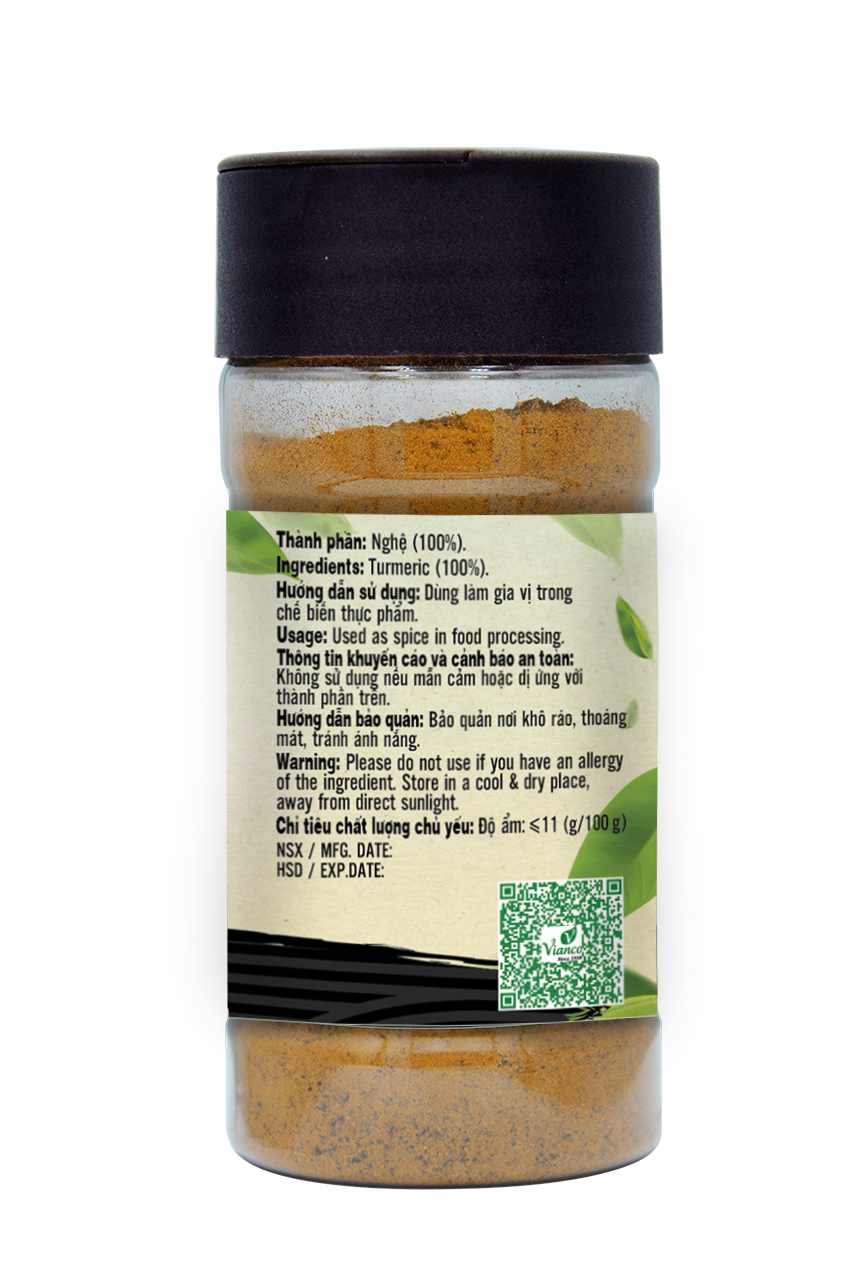
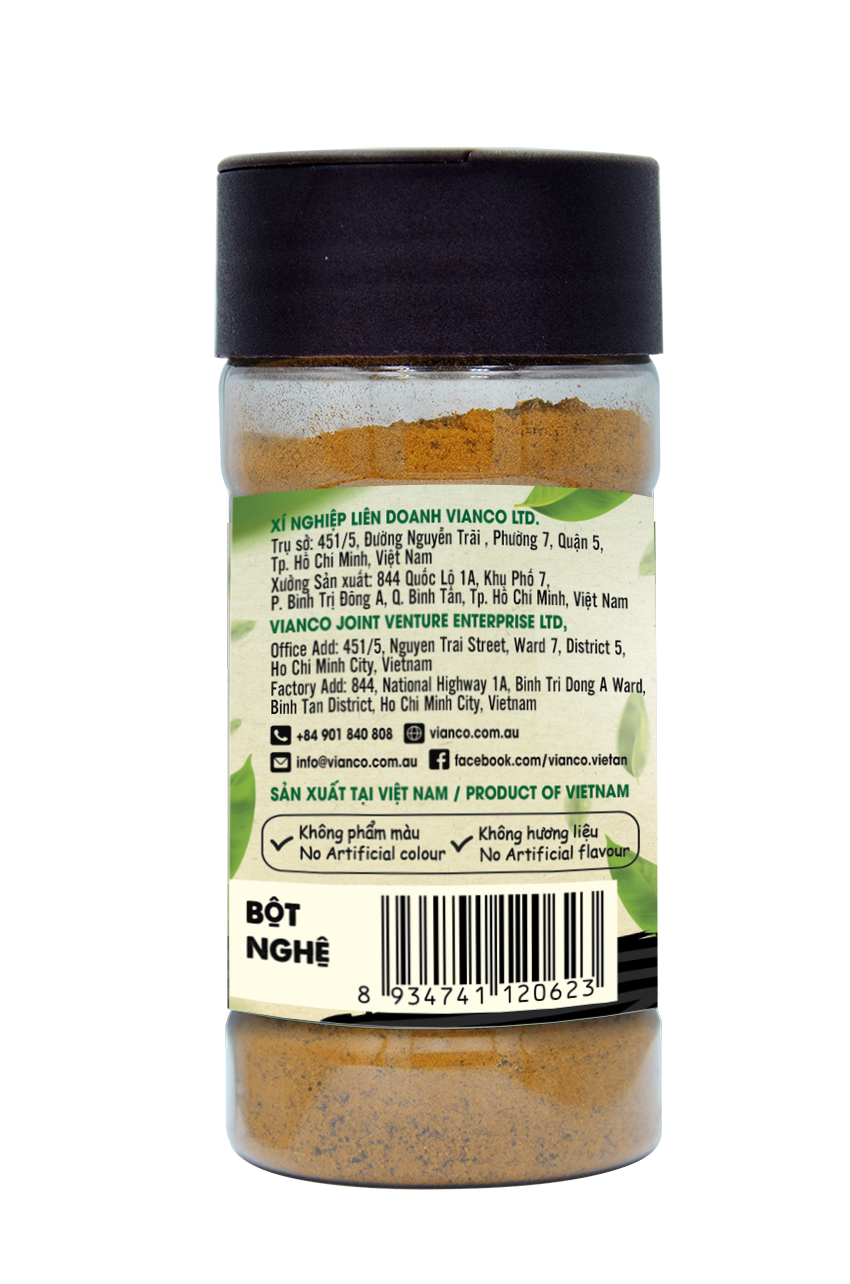



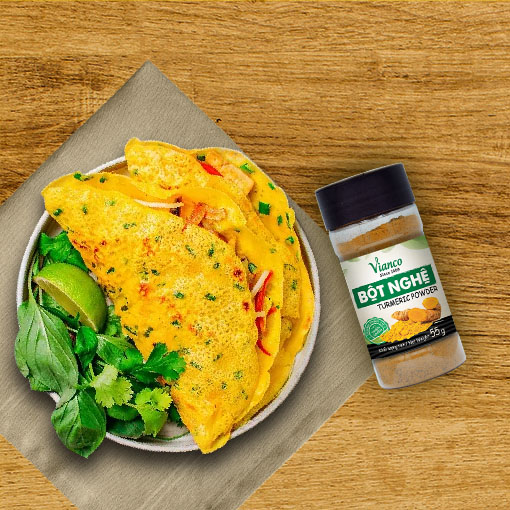











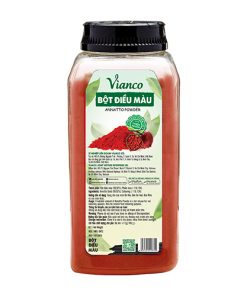
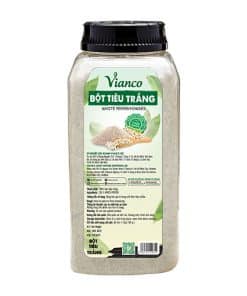
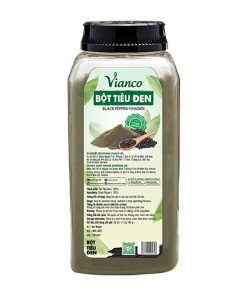
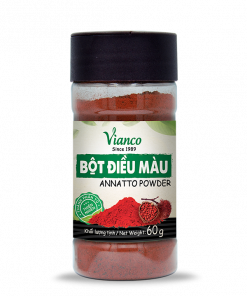

Reviews
There are no reviews yet.